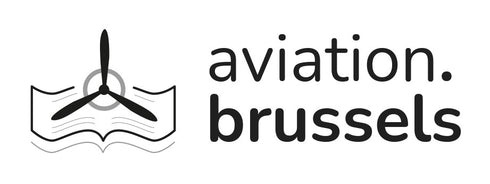The Air Annual of the British Empire, 1933 - 4 ( Volume V )

















Prix régulier 70,00 € TTC 6%
Characteristics
| Book cover finish | Canvas finish, Hardcover ( square back binding ) |
| Special features | First edition, Original edition ( O.E. or Or.E ) |
| Condition | Used, acceptable |
| Number of pages | 718 |
| Published date | 1933 |
| Language | English |
| Size | 19 x 25 x 4.5 cm |
| Author | Squadron Leader C.G. Burge O.B.E. - A.R.Ae.S.I. - A.M.Inst.T. |
| Editor | SIR ISAAC PITMAN & SONS, LTD. |
Description
PREFACE
AIR DISARMAMENT
Disarmament, and more especially that of the Air, continues to occupy the greater part of the time of the League of Nations*. The discussions, which were to have been continued in Committee, are now postponed until September. We take this opportunity of recording our observations on this important subject as briefly as we can.
Failing effective measures for the international control of Civil Aviation, the abolition of air forces cannot be considered, neither for that matter is any great reduction of the existing strengths of the leading Air Powers to be expected. States will be compelled to maintain air forces on a scale sufficient to safeguard their interests. Measures to limit the size of air forces and to regulate the use of aircraft by codified law are among the most practical of the proposals submitted to the conference, and these are the more likely to form the basis of an international agreement.
Forcible arguments can be advanced in support of the abolition of navies and armies, whose methods of waging war are no more humane, indeed in many respects less so, than those of war waged from the air. ( ... ) Where is the logic of wishing to do away with a force employing weapons which in actual fact would lead to less loss of life and suffering if war did break out ? The fact of the matter is that air invasion to some countries the advocates of abolition is the only menace with which they are threatened, whilst other countries are menaced more by invasion from the land. To these latter, whose civilian populations have learnt from bitter experience what unpreparedness means to them, the risks of air bombardment are no greater and its horrors less than those associated with invasion by land forces.
Let us then seek refuge in a strong air force and not gamble with sentiment. The progress of civilization is more likely to be hastened and the risk of war actually made less by allowing aviation to develop and to take its rightful position among the defence forces of the country. The alternatives are to retard human progress and to revert to wars of attrition in which the loss of life and human suffering even among the civilian population will be far more intense, not only during the war itself but in the succeeding years of peace. No restrictions upon the weapons to be employed in war are going to safeguard peace.
These restrictions would, more likely than not, have the very opposite effect, for they would make it easier for nations so inclined to embark upon war. ( ... )
* The first worldwide intergovernmental organisation whose principal mission was to maintain world peace ( 1920 - 1946 ).
( source : Wikipedia ).


















